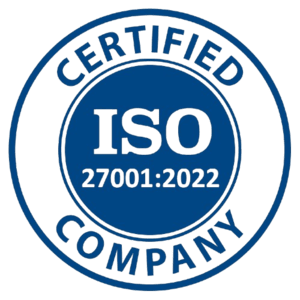Agreed, most companies invest a great deal of time and effort in ensuring that they help their employees grow. Until recently, the process was rather straightforward – Managers define the training agenda and the employees follow it. However, today, employees want more personal and engaging learning experiences, thanks to technology and all the access to convenience and productivity it grants us.
This being the case, does the traditional mindset of ‘managers define the training requirements and the employees will fulfill them’ still hold true? Let’s find out.
What is the Old-School Approach to Training and Development?
“The old-school approach to training and development (T&D) typically involved managers identifying training needs for their employees and then directing the L&D team to create and deliver training programs to meet those needs. It is a simple process that the L&D team implements to organize the training program”, once managers decide the parameters of the training program. The training session is typically conducted leveraging standard materials or pre-made modules and employees are mandated to attend.
Pros and Cons of the Old School Way
The old-school approach has worked for decades now, and it still holds value in some aspects. But with the drastic shift in employee expectations and technology over the last decade, there have been challenges too. Let’s take a closer look at the pros and cons of this approach:
Pros
- Clear Direction: Managers provide a clear direction for training and L&D as they understand their team’s needs and organizational goals. They effectively analyze the skills and knowledge required for individual and team success. Additionally, managers create a friendly environment within the workplace, which helps employees gain expertise quickly and efficiently.
- Faster Decisions: When managers make well-informed decisions about training programs, it speeds up the process and avoids delays. This benefits employees where skills must be updated quickly in a fast-paced work environment. Managers make sure employees receive relevant training at the right time.
- Accountability: The traditional approach often uses a hierarchical structure where managers clearly define the responsibilities of each employee. They even track the employee’s progress and if needed, keep them motivated to complete the required training.
- Cost-effective: The old-school approach can be cost-effective because of its effortlessness. When managers give the directions for training, it saves time that might otherwise go into meetings and figuring out each employee’s needs. So no extra cost has to be spent on creating personalized training materials for each employee, using various training methods.
Cons
- Lack of Employee Engagement: The old-school training method can not keep learners focused and motivated all the time. Employees can lose interest if the training material is not aligned with their individual training needs and career goals. Also, they will not be excited about participating in such a training program.
- One-size-fits-all Approach: It is impractical for every manager to be aware of each employee’s individual needs, interests, and learning styles. So the one-size-fits-all approach to training can be ineffective and won’t work for everyone.
- Limited Innovative Development: In a scenario where the L&D team is directed by the managers and their training requirements, developing innovative and creative training programs to address the organization’s future needs might be compromised. Managers may not always be aware of the latest training methods or technologies, which can limit the effectiveness of the learning programs.
Is there a Future for Old-school Training in the Modern World?
Old-school training provides value in maintaining discipline and a strong foundation, but it doesn’t keep up with the fast-changing business world. Modern ways of learning involve critical thinking and developing our problem-solving skills through interactive learning experiences, which traditional training methods do not allow for.
Sure, classroom learning and mentorship are still important, meaning old-school training methods can still remain relevant in the future. However, to effectively train and upskill today’s employees, the usage of state-of-the-art training technologies cannot be overlooked. The best way forward is a blend of traditional and modern training methods, that cater to the needs of the employees as well as the business.
The modern twist to the Ols-school Approach: The Role of Technology
Technology plays a crucial role in reshaping the old-school approach to training by adding creativity, productivity, and flexibility to the learning and development process.
Here’s how:
- Accessibility & Flexibility: Technology has brought accessibility and flexibility to learning. In the old-school approach, training was mostly conducted in physical classrooms and at specific times, making it challenging for employees to access or attend the training program. With technology coming in, training materials are available online, and learners can access them from anywhere and at any time that is convenient for them.
- Interactive Learning Modules: Traditional training typically works with static and fixed training material. This approach lacks interaction or even engagement compared to today’s training programs. Technology allows us to use a wide variety of interactive elements such as videos, simulations, and gamified content. This makes learning engaging, immersive, and interesting for learners.
- Collaborative & On-going Learning Opportunities: The Old School training does not encourage collaboration nor does it promote the culture of ongoing Learning. Technology, on the other hand, develops continuous learning practices and increases collaboration among team members in real time. It allows employees to interact, share ideas, and learn from each other.
- Real-Time Analytics and Feedback: In a traditional approach, It was difficult to measure employee performance, and identifying chances for improvement is a huge challenge. Technology provides robust analytics tools that allow managers to track performance effectively and get valuable feedback throughout the training program.
- Mobile Learning: Mobile learning makes training materials more accessible than ever. It allows learners to engage with learning resources at their convenience. This differs from the old way of learning where training materials were typically limited to physical documents and on-site training sessions.
Conclusion
The old-school training approach that involved managers planning and directing training on behalf of L&D could address immediate business needs. But it is also important to maintain a balanced training program. When managers, employees, and L&D teams work together to identify training needs and deploy holistic training programs, it creates an exciting and effective atmosphere for learning. This ensures that training meets the short-term needs and long-term goals of both the employees as well as the organization.
Here's how Airmeet Facilitates Learning and Development
FAQ
The old-school method depends on guidelines from the managers, which prioritizes structure. However, modern training methods focus on teamwork and getting employees engaged with learning by providing flexible training solutions.
Managers and L&D professionals can collaborate efficiently by making sure the training programs align with company goals, allowing open communication to identify specific skills required, and developing programs that will fulfill the company’s short-term and long-term goals.
Modern training and development (T&D) methods provide a personalized learning solution that caters to individual employee’s training needs. It makes learning interesting, easier, and continuous. The latest T&D helps gain new skills and knowledge more effectively which boosts employee engagement and satisfaction.
First, “try and understand why the employee is resisting the training”. Educate them about how they can benefit from the training program and why it is important to their growth, highlighting its relevance to their role while making allowances for flexibility in their training schedule.
You can do this by regularly updating ‘training material and content”, based on industry trends and standards, informing managers about the latest developments, and providing feedback for continuous improvement.





























